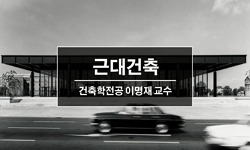본고에서는 1930년대 후반 강원도 표상을 『아사히신문(朝日新聞)』 외지판을 중심으로 고찰하였다. 강원대학교 강원문화연구소에서 발간한 『근대 강원도 관련 기사정리』(2020)를 활용하여...
http://chineseinput.net/에서 pinyin(병음)방식으로 중국어를 변환할 수 있습니다.
변환된 중국어를 복사하여 사용하시면 됩니다.
- 中文 을 입력하시려면 zhongwen을 입력하시고 space를누르시면됩니다.
- 北京 을 입력하시려면 beijing을 입력하시고 space를 누르시면 됩니다.
1930년대 후반 강원도 표상 - 『아사히신문』 외지판을 중심으로 - = The representation of Kangwon-do in 1930s : Focused on the oversea's edition of The Asahi shimbun
한글로보기https://www.riss.kr/link?id=A107912458
- 저자
- 발행기관
- 학술지명
- 권호사항
-
발행연도
2020
-
작성언어
-
-
주제어
강원도 ; 개발 ; 근대 ; 금강산 ; 외지판 ; Kangwon-do ; development ; modern times ; Mt ; Geumgang ; oversea’s edition
-
자료형태
학술저널
-
수록면
45-63(19쪽)
- 제공처
-
0
상세조회 -
0
다운로드
부가정보
국문 초록 (Abstract)
본고에서는 1930년대 후반 강원도 표상을 『아사히신문(朝日新聞)』 외지판을 중심으로 고찰하였다. 강원대학교 강원문화연구소에서 발간한 『근대 강원도 관련 기사정리』(2020)를 활용하여 강원도 관련 기사를 첫째, 강원도 개발에 주목하여 경제개발, 자원개발, 금강산관광 항목으로 나누고, 둘째, 재해와 사건·사고 관련 기사들을 자연재해, 인간사회에서의 사건과 사고로 나누어 살펴보았다. 셋째, 건강, 위생, 교육과 관련된 기사들을 살펴보았다. 분석 결과, 먼저 강원도는 경제적으로 낙후된 지역으로 인식되었으며 경제개발의 필요성이 역설되었다. 금강산을 중심으로 한 지하자원 개발을 둘러싸고 개발이냐 보존이냐의 논쟁이 일어나기도 했다. 그리고 홍수로 큰 피해를 입었으며 복구에는 여러 시간이 걸려 이재민들은 강제 이주를 당하기도 했다. 또한 사이비종교와 토지 사기 사건들이 나타났다. 마지막으로 육아, 신체 발육, 위생 등 생활 속의 세세한 측면까지 제도적 통제가 이루어졌다. 강원도 관련 기사들은 당시 식민지 지배의 정책 방향과 그 속에서 살아가던 지역 사람들의 굴곡진 삶의 모습을 생생하게 드러내주는 증거물이라고 할 수 있다.
다국어 초록 (Multilingual Abstract)
This paper examines the representation of Kangwon-do in the late 1930s, based on the oversea’s edition of Asahi Shinmun. As data for analysis, I used 『Articles related Modern Gangwon province』(2020) published by The Institute of Kangwon Communit...
This paper examines the representation of Kangwon-do in the late 1930s, based on the oversea’s edition of Asahi Shinmun. As data for analysis, I used 『Articles related Modern Gangwon province』(2020) published by The Institute of Kangwon Community Culture in Kangwon National University. First, as for the developmental aspect in Gangwon-do, articles are divided into three parts, that is, economy, resources and Mt. Geumgang tourism. Second, the articles reporting disasters, incidents and accidents are classified into things both by nature and by human society. Third, articles related to health, hygiene, and education are examined. The results of analyzing the articles are as follows. First of all, Gangwon-do was recognized as an economically underdeveloped region, so the necessity of economic development was emphasized. Also, there were debates over the development of underground resources in Mt. Geumgang between conflicting views of development and conservation. The severe damages caused by floods, which it would take long time to recover, caused people to forcibly move. Besides, there were social issues regarding pseudo-religion and cases of land fraud. Lastly, institutional regulation was enforced into the detailed aspects of public lives such as child-rearing, physical development and hygiene. In conclusion, articles related to Gangwon-do serve as evidence which vividly reveals the direction of the colonial policies at the time and the tough lives of the local people living in them.
동일학술지(권/호) 다른 논문
-
- 강원대학교 강원문화연구소
- 이상수 ( Lee¸ Sang Soo )
- 2020
-
- 강원대학교 강원문화연구소
- 김금숙 ( Kim¸ Gum-suk )
- 2020
-
민속과 문학의 교섭 양상 고찰 - 류재만의 바다시를 대상으로 -
- 강원대학교 강원문화연구소
- 이한길 ( Lee¸ Han-kil )
- 2020
-
지역포괄 일본형 CCRC 정책 및 사례 연구 - System, Yuimaru-Nasu 중심으로
- 강원대학교 강원문화연구소
- 니시야마치나 ( Nishiyama¸ China )
- 2020




 KISS
KISS






